Nocturnal urinary melatonin excretion is associated with non-dipper pattern in elderly hypertensives
Nocturnal urinary melatonin excretion is associated with non-dipper pattern in elderly hypertensives
 Por: Kenji Obayashi, Keigo Saeki, Junko Iwamoto, Nozomi Okamoto, Kimiko Tomioka, Satoko Nezu, Yoshito Ikada y Norio Kurumatani. Hypertension Research (2013) 36, 736–740.
Por: Kenji Obayashi, Keigo Saeki, Junko Iwamoto, Nozomi Okamoto, Kimiko Tomioka, Satoko Nezu, Yoshito Ikada y Norio Kurumatani. Hypertension Research (2013) 36, 736–740.
Although oral melatonin administration may enhance a nocturnal blood pressure fall, it remains unclear whether endogenous melatonin, which is present at considerably lower levels than pharmacological melatonin, is associated with the non-dipper pattern. The present cross-sectional study aimed to determine the association between urinary melatonin excretion, an index of endogenous melatonin, and the non-dipper pattern. We measured the following variables in 141 elderly hypertensives: overnight urinary melatonin excretion, ambulatory blood pressure and actigraphic physical activity. [Actualizado: 12 de agosto 2013]
Epidemiology of hypertension in Yemen: effects of urbanization and geographical area
 Por: Pietro Amedeo Modesti, Mohamed Bamoshmoosh, Stefano Rapi, Luciano Massetti, Dawood Al-Hidabi y Husni Al Goshae. Hypertension Research (2013) 36, 711–717.
Por: Pietro Amedeo Modesti, Mohamed Bamoshmoosh, Stefano Rapi, Luciano Massetti, Dawood Al-Hidabi y Husni Al Goshae. Hypertension Research (2013) 36, 711–717.
Although globalization can contribute to increased blood pressure by spreading unhealthy behaviors, it also provides powerful means to tackle hypertension. The dissemination of information about and advice on cardiovascular prevention and facilitated contact with health services are valuable resources. To investigate the effects of urbanization, geographical area, and air temperature on hypertension burden and kidney damage, a survey was performed in 2008 with a door-to-door approach among urban and rural adult dwellers of three geographic areas (capital, inland, coast) of Yemen. [Actualizado: 12 de agosto 2013].
 Por: Ruth E. Brown, Michael C. Riddell, Alison K. Macpherson, Karissa L. Canning y Jennifer L. Kuk. American Journal of Hypertension Volume 26, Issue , Pp. 1005-1010.
Por: Ruth E. Brown, Michael C. Riddell, Alison K. Macpherson, Karissa L. Canning y Jennifer L. Kuk. American Journal of Hypertension Volume 26, Issue , Pp. 1005-1010.
We conducted a study to determine the joint association of physical activity, pharmacologic treatment for hypertension, and the control of blood pressure (BP) on all-cause mortality risk.
Physical activity may be as or even more important than pharmacotherapy for reducing the risk of mortality in adults with hypertension. However, the risk of mortality remained higher for physically active adults with treated and controlled hypertension than did the risk of mortality for physically active normotensive populations. Prevention of hypertension is therefore imperative for reducing the all-cause risk of premature mortality in adults. [Actualizado: 12 de agosto 2013].
Algunos antihipertensivos aumentan riesgo de cáncer de mama
 Las mujeres posmenopáusicas que tomaron algunos medicamentos para la hipertensión durante 10 años o más enfrentan un riesgo más de dos veces mayor de desarrollar cáncer de mama, dijeron investigadores estadounidenses.
Las mujeres posmenopáusicas que tomaron algunos medicamentos para la hipertensión durante 10 años o más enfrentan un riesgo más de dos veces mayor de desarrollar cáncer de mama, dijeron investigadores estadounidenses.
Las mujeres que tomaban fármacos bloqueadores de los canales de calcio (BCC) contra la presión arterial alta presentaron 2,4 a 2,6 más riesgo de desarrollar cáncer de mama que las mujeres que no tomaban ese tipo de medicación, señaló la investigación publicada en la revista Journal of the American Medical Association (JAMA).
Los expertos dijeron que los hallazgos podrían tener importantes implicaciones para la salud pública.
“Aunque algunos estudios han sugerido una relación positiva entre la toma de BCC y el riesgo de cáncer de mama, éste es el primer estudio en observar que el consumo a largo plazo de estos bloqueadores en particular, está asociado con el riesgo de cáncer de mama”, dijo el estudio.
Los BBC, también conocidos como antagonistas del calcio, fueron el noveno fármaco más recetado en Estados Unidos en 2009, con más de 90 millones de recetas, según JAMA.
Los ejemplos incluyen amlodipina, diltiazem, felodipina, isradipina, nicardipina, nifedipina, nisoldipina y verapamilo.
Estos fármacos evitan que el calcio se acumule entre en los músculos del corazón y las arterias, y pueden ensanchar los vasos sanguíneos y disminuir la frecuencia cardíaca.
“Otros medicamentos antihipertensivos – diuréticos, betabloqueadores y antagonistas de los receptores de la angiotensina II (ARA-II) – no se asociaron con un mayor riesgo de cáncer de mama”, indicó el estudio de JAMA.
Los investigadores examinaron el riesgo de cáncer de mama en una población de mujeres de 55 a 74 años en el estado de Washington (noroeste). Un total de 880 desarrolló cáncer de mama ductal invasivo, 1027 cáncer de mama lobular invasivo y 856 no padecían cáncer y sirvieron como grupo de control.
Los científicos hallaron que la toma de BCC durante 10 o más años se asociaba con probabilidades 2,4 veces mayores de padecer cáncer de mama ductal y 2,6 veces mayores de sufrir cáncer de mama lobular.
“Si el aumento de dos a tres veces mayor del riesgo encontrado en este estudio se confirma, la toma de BCC a largo plazo sería uno de los principales factores de riesgo modificables para el cáncer de mama”, escribió en un editorial en JAMA Patricia Coogan, epidemióloga principal en el Centro de Epidemiología Slone en la Universidad de Boston.
El cáncer de mama es el cáncer más común en mujeres en todo el mundo. Según el Instituto Nacional del Cáncer de Estados Unidos, una de cada ocho mujeres nacidas hoy desarrollará cáncer de mama durante su vida.
(Fuente: Boletinal día) (Tomado de JAMA: Use of Antihypertensive Medications and Breast Cancer Risk Among Women Aged 55 to 74 Years.JAMA Intern Med. 2013 ) [Actualizado: 13 de agosto 2013].
 Por: Sayeed Ikramuddin, MD; Judith Korner, MD, PhD; Wei-Jei Lee, MD, PhD; John E. Connett, PhD; William B. Inabnet, MD; Charles J. Billington, MD; Avis J. Thomas, MS; Daniel B. Leslie, MD; Keong Chong, MD; Robert W. Jeffery, PhD; Leaque Ahmed, MD; Adrian Vella, MD; Lee-Ming Chuang, MD, PhD; Marc Bessler, MD; Michael G. Sarr, MD; James M. Swain, MD; Patricia Laqua, RD; Michael D. Jensen MD y John P. Bantle, MD. JAMA 2013;309(21):2240-2249.
Por: Sayeed Ikramuddin, MD; Judith Korner, MD, PhD; Wei-Jei Lee, MD, PhD; John E. Connett, PhD; William B. Inabnet, MD; Charles J. Billington, MD; Avis J. Thomas, MS; Daniel B. Leslie, MD; Keong Chong, MD; Robert W. Jeffery, PhD; Leaque Ahmed, MD; Adrian Vella, MD; Lee-Ming Chuang, MD, PhD; Marc Bessler, MD; Michael G. Sarr, MD; James M. Swain, MD; Patricia Laqua, RD; Michael D. Jensen MD y John P. Bantle, MD. JAMA 2013;309(21):2240-2249.
Controlling glycemia, blood pressure, and cholesterol is important for patients with diabetes. How best to achieve this goal is unknown. To compare Roux-en-Y gastric bypass with lifestyle and intensive medical management to achieve control of comorbid risk factors. In mild to moderately obese patients with type 2 diabetes, adding gastric bypass surgery to lifestyle and medical management was associated with a greater likelihood of achieving the composite goal. Potential benefits of adding gastric bypass surgery to the best lifestyle and medical management strategies of diabetes must be weighed against the risk of serious adverse events. [Actualización: 13 de agosto 2013].


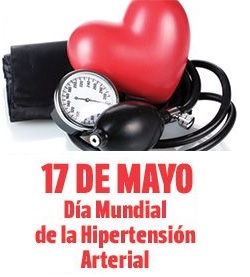
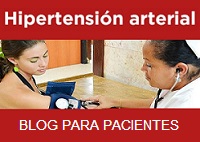


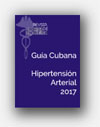
![Glosario: hipertensión [Hipertensión arterial en la atención primaria de salud. 2009]](http://temas.sld.cu/hipertension/files/2016/04/Glosario-e1541006177950.jpg)
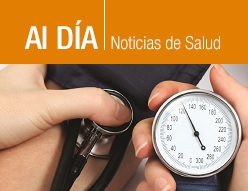
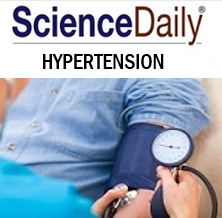

Comentarios recientes